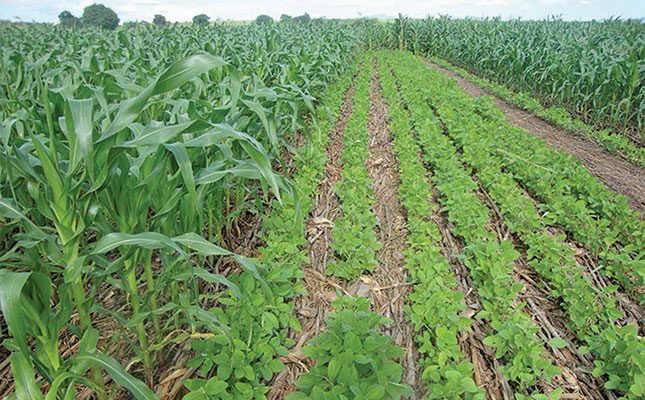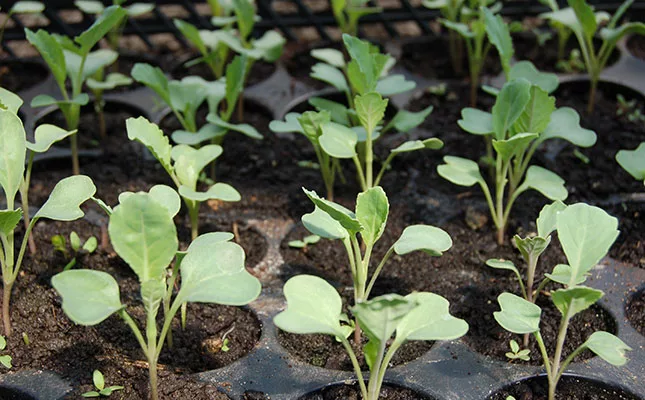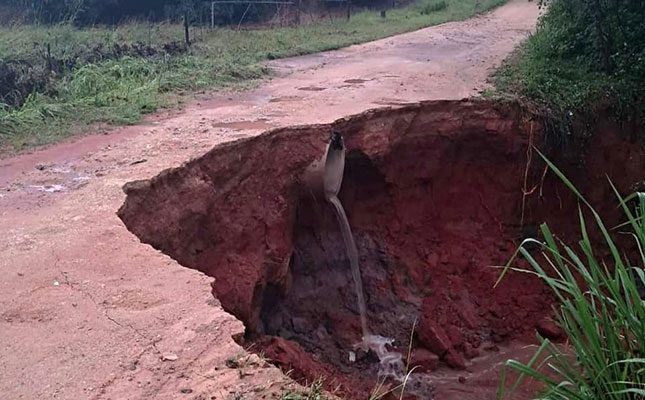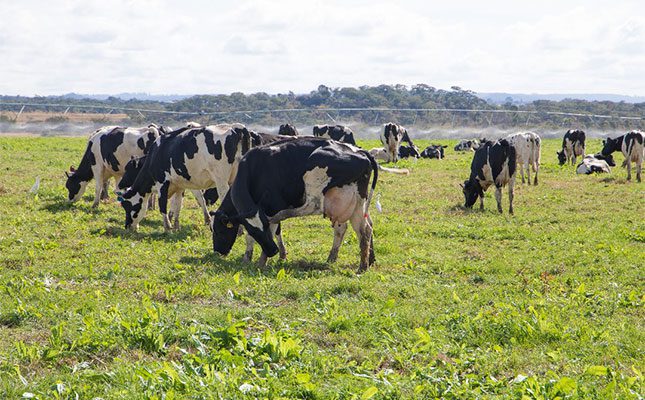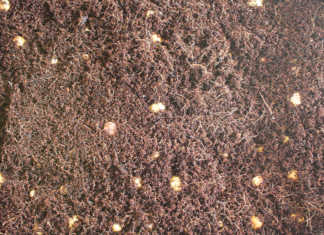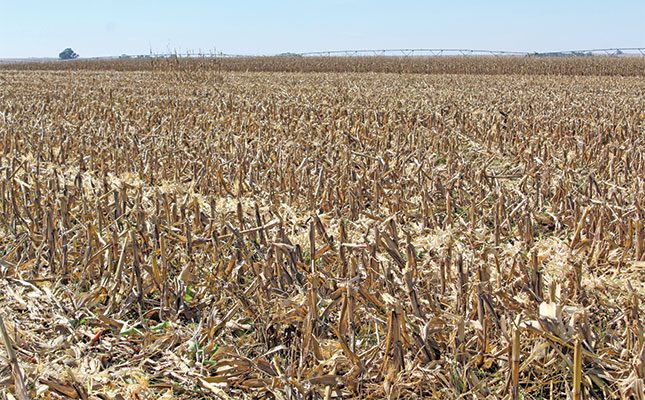
Photo: Lindi Botha
Maize is the most extensively grown field crop in South Africa, followed by soya bean and then wheat. Maize and wheat can both be farmed as dryland crops, thereby reducing input costs for irrigation.
While both crops can be farmed in the summer and winter rainfall production regions, maize production is overwhelmingly concentrated in the summer rainfall production regions of Mpumalanga, the Free State and North West.
Wheat is mostly grown in the winter rainfall production regions of the Western Cape, with some production taking place in the summer rainfall region, albeit under irrigation.
General considerations
The advent of minimum tillage or no-till cultivation practices has presented another dynamic to grain farming that holds many benefits if managed correctly. This includes improved soil moisture retention and weed control, and healthier soil.
Marguerite Pienaar, agricultural economist at Grain SA, however, cautions that farmers who want to undertake no-till cultivation need to understand that it is a long-term commitment that takes time to show benefits. Initial yields could also possibly be lower during the transition.
“The practice requires specialised equipment, such as planters with sufficient pressure and good spraying rigs for weed control. Starting on well-managed, non-compacted land is important, and producers who build organic matter should prioritise crop selection,” she explains.
Pienaar adds that cover crops can aid soil structure, and effective weed management is essential.
“While no-till can reduce costs in the long run, farmers must be prepared for the short-term investments in time and resources. Seeking advice from experienced individuals and being patient as the system develops are crucial for success.”
Optimal fertiliser applications are key to success in crop production. Since fertiliser requirements will be based on the available nutrients already in the soil, farmers need to do regular soil analysis and build a nutrient programme accordingly.
Another factor key in grain production success is weed control, especially during the first six to eight weeks after planting, as weeds compete vigorously with the crop for nutrients and water during this period.
Pienaar adds that the presence of weeds during harvest may hinder the harvesting process, pollute grain with seeds, transmit odours to grain causing downgrading, or incur additional costs for removal of seeds.
Once grain has been harvested, farmers have a further aspect to take into consideration: storage. The incorrect storage of grain can reduce its quality over time, and subsequently the price achieved for the grain.
Pienaar notes that while silo facilities and millers will store grain for a daily price, this cost should be taken into account against the cost of possible damage to the crop should the farmer store it themselves. Should farmers choose to store the grain themselves, they need to be certain the facility is safe from theft, rodents or insects, and moisture.
Cultivar selection
Grain cultivars should be chosen based on the region and climate, and whether the crop will be irrigation or rainfed.
Pienaar notes that the most important characteristics that aid cultivar selection include adaptability, yield potential, length of growing season, lodging, tillering, disease resistance, and percentage of grain moisture.
“To fully utilise these various aspects, it is important that the producer be familiar with characteristics of each cultivar. There are various registered cultivars from seed companies that are adapted to different maize and wheat producing regions of the country. For this reason, additional information regarding cultivar characteristics, long-term yield data and relative yields should be studied,” Pienaar says.
Farmers in South Africa have the option of planting traditional maize cultivars or those that have been genetically modified (GM) to provide herbicide tolerance, pest resistance, or both.
Herbicide-tolerant maize allows farmers to control weeds through a chemical spray application without harming the maize. Pest-resistant maize removes the need to apply pesticides for the targeted pests.
The Bureau for Food and Agricultural Policy (BFAP) reports that over 84% of maize planted in South Africa is GM. Only conventional wheat cultivars are available in South Africa.
In addition to the general considerations that farmers need to take into account for cultivar selection, wheat producers should also pay attention to the cultivars preferred by millers.
The National Chamber of Milling annually publishes a list of preferred cultivars that are acceptable for commercial purposes.
The Department of Agriculture advises that farmers plant multiple grain cultivars in order to mitigate risk. The optimum planting window for the cultivar and the area should also be utilised. Cultivars that are able to adapt to specific yield potential conditions should be chosen.
Cultivar choices should be revised annually to take advantage of any progress made in seed genetics.
How much grain does South Africa produce?
Maize
Total area under production: 2,635 million hectares
White maize production: 1,554 million hectares
Yellow maize production: 1,081 million hectares
White maize yield: 3,86t/ha
Yellow maize yield: 6,21t/ha
The Free State makes up the largest production area for white maize at 52,3% of the total area in South Africa. For yellow maize, the Free State and Mpumalanga are nearly tied at 34% and 32,8%, respectively.
Wheat
Total area under production: 538 000ha
Total production: 2,089 million tons
Average yield: 3,88t/ha
All figures are for the 2023/24 season.
Source: Grain SA
Crop rotation
Crop rotation is an important tool to maximise output while minimising input. Pienaar says that crop rotation is essential for improving soil fertility, reducing pests and diseases, enhancing water use efficiency, and increasing yields.
She notes that the best crops for rotation on a maize farm include soya bean, sunflowers and cover crops.
“For example, alternating maize and soya bean annually or every second year allows the soya bean to fix atmospheric nitrogen, replenishing soil nutrients for maize.
“A three-year cycle could include maize in the first year, soya bean in the second, and sunflower in the third, providing further pest and disease management and diversifying soil nutrient demands. These rotations optimise sustainability and profitability, particularly in regions with diverse climatic conditions.
“Wheat production is greatly aided by rotating production with canola, since it leads to higher wheat yields and assists in weed control, saving costs.”

Growing maize
Maize thrives in warmer climates with daytime temperatures ranging from 19°C to 25°C.
Temperatures exceeding 32°C are detrimental to yield, while low temperatures will slow growth. The department notes that frost can damage maize at all growth stages, and a warm, frost-free period of 120 to 140 days after planting is required to prevent damage.
Maize grows in a variety of soil types, but deep, naturally rich and easily tilled soil is preferred. The soil should be free from restrictive layers and soils with a pH lower than 4,5 should be avoided or should be corrected with lime applications.
The department says the most suitable soil type for maize production is a soil with a good effective depth at 30cm to 60cm, favourable structure, good internal drainage, and an optimal moisture regime.
Water deficiency is usually the most yield-limiting factor for maize. Therefore, dryland maize requires annual rainfall of at least 500mm to 750mm.
To optimise planting windows for maize between regions, the department advises that for the cooler eastern production areas, from the beginning of October to the first week of November is ideal.
For the central regions, planting can be done from the last week in October to mid-November, and for the drier western areas, from the last two weeks in November to mid-December.
Planting depths of maize vary from 5cm to 10cm, depending on the soil type and planting date. Usually, planting should be shallower in heavier soils than in sandy soils. If plantings are made early, it can be shallower in all soil types.
Stalk borers are the main maize insect pest. Registered chemicals can be applied mechanically or manually. The department notes that insect infestations can be minimised by manipulating planting dates and using resistant varieties. Fields should be inspected on a regular basis to spot pests at an early stage.
Maize is harvested in autumn. The visible sign of the maturing maize plant is senescence – dying back of leaves starting from the lower leaves continuing upwards. This is the period of grain drying, which can be monitored through the kernel milk-line, a whitish line at the base of the kernel.
The disappearance of the milk-line denotes that the grain has reached physiological maturity. The appearance of a black layer at the lower tip of the kernel and detachment of kernel from the cob denotes harvestable maturity. A combine harvester is used to cut the maize and separate the kernels from the cobs.
Growing wheat
An ideal climate for planting wheat can be described as cool and moist, followed by a warm, dry season for harvesting. Such a climate is encountered mostly in winter rainfall areas. Temperatures suitable for winter wheat are between 5°C and 25°C.
The water requirement for wheat is about 600mm per annum. In dry areas where no-till and minimum till are practised, stubble mulching is recommended for moisture conservation.
Wheat requires well-drained, fertile, loamy to sandy loam with a pH of 6 to 7,5. Soil temperatures of less than 5°C are not suitable for seed germination.
The department notes that wheat is adversely affected by acidic soils, particularly during the early development stages of the crop. The acidity renders soil nutrients unavailable, so liming is required to lower the pH.
Wheat is planted mainly between mid-April and mid-June in the winter rainfall areas, and between mid-May and end-July in the summer rainfall areas. Wheat takes between 130 and 190 days to grow.
Plant stand is an important factor to take into account to ensure high yields. Grain SA recommends that seed densities of 80kg/ha to 140kg/ha be used for plantings between June and the end of July.
High-yielding cultivars’ densities can even go up to 160kg/ ha to 200kg/ha. It is therefore important that farmers understand the planting densities of the specific cultivar they have chosen.
The first 40 days are the most important in determining the yield potential of a wheat crop.
Grain SA emphasises that farmers should ensure all their management efforts are focused on maximising yield potential during this stage. This means managing weeds and ensuring optimal nutrition and water.
Pienaar states that weeds limit grain yields by approximately 20% annually.
“By alternating crops and changing herbicides, it is possible to control a wider spectrum of weeds. It is also very important to alternate the type of herbicides used from year to year to lower the chance of herbicide resistance developing. The aim of managing weeds early is to give the wheat crop the chance to outgrow any weeds that emerge later, so that the wheat out-competes the later-emerging weeds and maximises its potential yield,” she explains.
A combine harvester is used to cut, separate and clean the grain, and must be properly adjusted to minimise grain losses. Wheat that is not harvested in time can quickly deteriorate in terms of quality. Almost all cultivars are susceptible to preharvest sprouting and must be harvested as soon as possible to prevent sprouting.
Factors that influence grain production success
According to Grain SA, the following are required and/or should be taken into account to optimise grain yields:
- A properly planned crop rotation system;
Soil selection; - Taking of soil samples to evaluate and guide nutrition programmes;
- An effective liming programme, if cost-effective to apply;
- The correct fertilisation programme, keeping in mind that each crop requires different levels of nitrogen applications;
- The appropriate soil cultivation methods;
- Planting the best, most suitable cultivars;
- Precise calibration of planters;
- Planting in the most optimal time or window of opportunity;
- A proper planned and implemented spraying programme for the control of weeds, insects, and diseases before and during the growing season;
- Timely harvesting; and
- The effective marketing of your crop.
Source: Grain SA
Markets
Grain prices follow traditional supply and demand curves. When supply is low, or demand is high, prices will rise, and vice versa.
Maize and wheat are traded on the Johannesburg Stock Exchange and a spot price is available daily. Grain SA explains that the spot price refers to the current market price on the day on which the grain is sold or bought.
BFAP notes that the maize price is greatly determined by the health of the livestock industry, since most maize is destined for animal feed. The slowdown in growth in livestock production globally is therefore expected to negatively influence maize prices in the coming years.
Since much of South Africa’s wheat is imported, local prices are influenced by international wheat prices, the strengthening of the rand against other currencies, international and local wheat supply, and weather conditions.
BFAP notes that due to a relatively high level of integration with world prices, local wheat prices are expected to decline over the next three years, as commodity markets are generally expected to normalise, before continuing on an upward trajectory until the end of 2033.
Local wheat prices are expected to decline by 1,8% this year, before increasing by 2,8% per annum from 2026 to 2033.
Email Marguerite Pienaar at [email protected].


